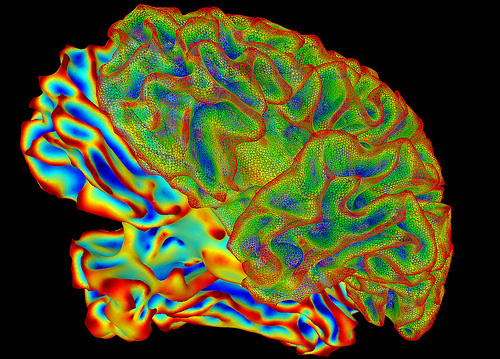
BY: SOPHIA VOUMVAKIS
In June of last year I wrote a post entitled Can the Brain Repair Itself? The answer to this question according to research conducted by Dr. Siddharthan Chandran, director of the Centre for Clinical Brain Sciences, is “Yes, just not well enough.”
In 2013, Dr. Chandran and his associates were able to extract stem cells from the bone marrow of patients with Multiple Sclerosis, use these stem cells to grow myelin cells – damage of myelin cells is associated with diseases such as Multiple Sclerosis (MS) – and then inject these cultured myelin cells back into the patient’s veins. To measure whether the intervention was successful, the scientists examined the optic nerve. The size of the optic nerve was measured before the injection of the lab grown myelin cells, three and six months post injection (patients with MS usually have vision problems). Results showed the optic nerve had stopped shrinking, which Dr. Chandran believes is the result of the injected myelin cells. These cells promoted the brain’s own stem cells to do their job of laying down more myelin.
In December 2015, neurosurgeon Dr. Jocelyne Bloch gave a TED talk entitled The Brain May Be Able To Repair Itself With Help. In this research, Dr. Bloch, along with Dr. Jean-Francois Brunet were able to culture cells from pieces of swollen brain tissue that had been removed from patients with brain trauma in order to reduce intracranial pressure.
What they discovered, after many failed attempts to grow cells from these pieces of brain tissue, is that under the microscope, these cells looked very much like stem cells. Stem cells are immature cells that we can grow into any other type of cell. Remember, Dr. Chandran and his colleagues were able to grow myelin cells from a patient’s own stem cells.
The culture that Drs. Bloch and Brunet had grown was however somewhat different from other stem cells – they looked like stem cells, but behaved differently. This new cell population was not as active as other stem cells, that is, they divided less rapidly, and unlike other stem cells, they died. The stem cells came from doublecortin-positive cells, which make up four per cent of our cortical brain cells and during our fetal development doublecortin-positive cells facilitate our brain folding itself.
Drs. Bloch and Brunet postulated that doublecortin-positive cells may promote brain repair because they found a higher concentration of these cells in areas of brain lesions. This observation is a correlation, not a cause and effect. So, the scientists designed an experiment to demonstrate that these stem cells derived from doublecortin-positive cells do indeed promote brain repair. The experimental design that Drs. Bloch and Brunet created involved the biopsy of cortical cells, culturing these cells, labelling the cultured cells and re-injecting the cultured cells into the same individual.
Working with professor Eric Rouller, from the University of Fribourg, Switzerland, Drs. Bloch and Brunet re-implanted the cultured stem cells into the a healthy monkey’s brain. What they observed several weeks later, was that the re-implanted stem cells had completely disappeared. Dr. Bloch postulates that the cells were not needed, as there was no damage, and simply went somewhere else. However, when these cultured stem cells were re-implanted into the brain of a monkey with a lesioned brain, the cultured stem cells remained and became mature neurons!

The next question posed by Drs. Bloch and Brunet was – “can these cells help a monkey after a lesion?” The scientists trained monkeys to perform a manual dexterity task – picking pellets of food off a tray. Once the monkeys had reached a plateau of performance, the scientists lesioned a section of the motor cortex that corresponds to the hand motion that the monkeys had been trained to perform. The monkeys were rendered pelagic, they could not move their hands anymore.
As with humans, the monkeys did, in time, spontaneously recover to a certain extent, due to the neuroplasticity of the brain. When the scientists were confidant that the monkeys had reached their plateau of spontaneous recovery, they re-implanted its’ own cultured cortical cells.
The monkey that had spontaneously recovered, and had not had its’ cultured cortical cells reimplanted, performed the task at about 40 -50% of his previous performance – not particularly accurate, and not too quick. The monkey with the re-implanted stem cells? Two months later, same performance as before the lesion!
Since then scientists have learned a lot more about these cells – they have been able to cryopreserve them for future use, and they have used them to treat other neuropathologies, such as Parkinson’s Disease. The next step is to go to human trials – a long, complicated and arduous process. I am optimistic that these brilliant scientists will one day get there and there will come a day when we will see the use of our own brain cells in the treatment of neuropathology’s in humans.
Since her TBI in 2011, Sophia has educated herself about TBI. She is interested in making research into TBI accessible to other survivors.
FEATURED PHOTO CREDIT: SumaLateral Whole Brain Image via photopin (license)
Filed under: Research Tagged: Brain injury, Dr. Chandran, Dr. Jean-Francois Brunet, Dr. Jocelyne Bloch, neuroplasticity, TED Talks
![]()




